Today Current Affairs: 18th December 2021 for UPSC IAS exams, State PSC exams, SSC CGL, State SSC, RRB, Railways, Banking Exam & IBPS, etc
Table of Contents
Legal Age Of Marriage For Women:

The Union Cabinet on December 15 took the decision to raise the legal age of marriage for women from 18 to 21 years. The legal age of marriage for men is 21 years.
- With this decision, the government will be bringing the age of marriage for both men and women at par.
- The law prescribes a minimum age of marriage to essentially outlaw child marriages and prevent the abuse of minors.
- Personal laws of various religions that deal with marriage have their own standards, often reflecting custom.
- For Hindus, The Hindu Marriage Act, 1955 sets 18 years as the minimum age for the bride and 21 years as the minimum age for the groom. In Islam, the marriage of a minor who has attained puberty is considered valid.
- The Special Marriage Act, 1954 and the Prohibition of Child Marriage Act, 2006 also prescribe 18 and 21 years as the minimum age of consent for marriage for women and men, respectively. For the new age of marriage to be implemented, these laws are expected to be amended.
The Union Cabinet’s decision to raise the legal age of marriage for women in India is based on the recommendation of a panel led by Jaya Jaitly.
- In June 2020, the Ministry for Women and Child Development set up a task force to look into the correlation between the age of marriage with issues of women’s nutrition, prevalence of anemia, IMR, MMR and other social indices.
- The committee, headed by former Samata Party president Jaya Jaitly, also had on board NITI Aayog member (Health) Dr V K Paul and secretaries of several ministries
- The committee has recommended the age of marriage be increased to 21 years.
- The committee also asked the government to look into increasing access to schools and colleges for girls, including their transportation to these institutes from far-flung areas.
- Skill and business training has also been recommended, as has sex education in schools.
- The committee said these deliveries must come first, as, unless they are implemented and women are empowered, the law will not be as effective.
- The committee has further recommended that an awareness campaign be undertaken on a massive scale on the increase in age of marriage, and to encourage social acceptance of the new legislation, which they have said would be far more effective than coercive measures.
Nuclear Power Reactors:
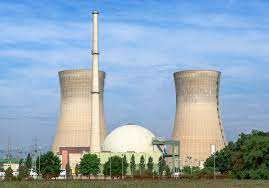
Union Minister of Atomic Energy said, the Government has accorded ‘In-Principle’ approval of the site at Jaitapur in Maharashtra for setting up six nuclear power reactors of 1650 MW each in technical cooperation with France which would make it the largest nuclear power generating site with a total capacity of 9900 MW.
- The project is proposed to be setup at Jaitapur site in Ratnagiri district of Maharashtra. Presently techno – commercial discussions to arrive at the project proposal with M/s. EDF, France are in progress.
- The present installed nuclear power capacity in the country is 6780 MW and the share of nuclear power in the total electricity generation in the country is about 3.1% in the year 2020-21.
- The present nuclear power capacity of 6780 MW is planned to be increased to 22480 MW by 2031 on progressive completion of projects under construction and accorded sanction.
- The Government has taken several measures to enhance the generation from nuclear power plants in the country. These include:
- Accord of administrative approval and financial sanction of – ten (10) indigenous 700 MW Pressurized Heavy Water Reactors (PHWRs) to be set up in fleet mode with provision of equity support.
- Resolution of issues related to Civil Liability for Nuclear Damage (CLND) Act & Creation of Indian Nuclear Insurance Pool (INIP).
- Amendment of the Atomic Energy Act to enable Joint Ventures of Public Sector Companies to set up nuclear power projects.
World Trade Organization (WTO) Has Ruled Against India’s Sugar Subsidies:
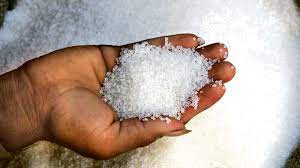
A panel set up by the Dispute Settlement Body (DSB) of the World Trade Organization (WTO) has ruled against India’s sugar subsidies.
- It has asked it to “withdraw its prohibited subsidies under the Production Assistance, the Buffer Stock, and the Marketing and Transportation Schemes within 120 days from the adoption of [the] report”.
- The panel circulated its report, ‘India — Measures Concerning Sugar and Sugarcane’, on December 14. The report is yet to be adopted (or rejected) by the WTO’s full membership.
- Three countries, Australia, Brazil and Guatemala, had complained about “support allegedly provided by India in favour of producers of sugarcane and sugar (domestic support measures), as well as all export subsidies that India allegedly provides for sugar and sugarcane (export subsidy measures)”.
- India’s domestic support and export subsidy measures appeared to be inconsistent with various articles of the WTO’s Agreement on Agriculture and the Agreement on Subsidies and Countervailing Measures (SCM), and Article XVI (which concerns subsidies) of the General Agreement on Trade and Tariffs (GATT).
- India provides domestic support to sugarcane producers that exceeds the de minimis level of 10% of the total value of sugarcane production, which they said was inconsistent with the Agreement on Agriculture.
Foreign Direct Investment (FDI):

India has registered the highest ever annual Foreign Direct Investment (FDI) inflow of 81.97 billion dollar in 2020-21.
- Commerce and Industry Ministry said, FDI inflows in the last seven financial years is over 440 billion dollar, which is nearly 58 percent of the total FDI inflow in last 21 financial years.
- Top five countries from where FDI Equity Inflows were received during 2014 to 2021 are Singapore, Mauritius, USA, Netherlands and Japan.
- Computer Software and Hardware sector attracted the largest share of FDI inflows, followed by Service, Trading and Telecommunications.
India And Vietnam:

India and Vietnam sign Letter of Intent (LoI) to establish partnership in Digital Media.
- The LoI envisages sharing of information and experience in establishing policies and regulatory frameworks on digital media and social networks, and conducting capacity building and training programs for media professionals and officials in the two countries.
- Union Minister of Information & Broadcasting Shri Anurag Thakur also informed the Vietnamese counterpart about the Digital Media Ethics Code being implemented by the Government since February 2021.
- This year completes five years of “Comprehensive Strategic Partnership” between India and Vietnam, and the year 2022 will mark fifty years of diplomatic relations between the two countries.
US Imposes New Sanctions On China:
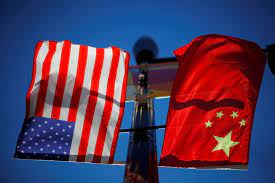
The U.S is imposing new sanctions on several Chinese biotech and surveillance companies and government entities over human rights abuses of Uyghur Muslims in the Xinjiang region of China.
- Xinjiang is technically an autonomous region within China — its largest region, rich in minerals, and sharing borders with countries like India, Russia, Mangolia and Afghanistan.
- The US Commerce Department is targeting China’s Academy of Military Medical Sciences and its 11 research institutes that focus on using biotechnology to support the Chinese military.
- The US Treasury Department is also set to issue penalties against several Chinese entities.
- The move will bar American companies from selling components to the entities without a license.
- The US administration supported bipartisan legislation that bans imports into the U.S. from Xinjiang unless companies can demonstrate the goods were not produced by forced labour.
- Earlier, in 2020 the United States House of Representatives approved a legislation calling for sanctions on Chinese officials responsible for oppression of Uighur Muslims.
- The bill calls for sanctions against those responsible for repression of Uyghurs and other Muslim groups in China’s Xinjiang province.
- The bill also calls on USA companies or individuals operating in the Xinjiang region to take steps to ensure their products do not include parts using forced labor of Uyghurs.
- Recently, 43 countries have signed a declaration, calling on China to ensure full respect for the rule of law for the Muslim Uighur community in Xinjiang.
- The declaration was signed by the US and other countries accusing China of human rights violations and ethnic cleansing against the Uighur Muslims.
- Similar declarations in 2019 and 2020 condemned China for its policies in Xinjiang, where United States has accused Beijing of carrying out genocide.
- It also called for access to Xinjiang for independent observers, including the UN High Commissioner for Human Rights.
- It noted the existence of a large network of ‘political re-education’ camps in Xinjiang Uighur Autonomous Region, where over a million people have been arbitrarily detained.
- However, China claims its camps to be ‘educational centres’ where the Uighurs are being cured of “extremist thoughts” and radicalisation, and learning vocational skills.
- China claims that Uighur groups want to establish an independent state and, because of the Uyghurs’ cultural ties to their neighbours, leaders fear that elements in places like Pakistan may back a separatist movement in Xinjiang.
- China has denied any abuses and says the steps it has taken are necessary to combat terrorism and a separatist movement.
Second Edition Of Water Innovation Challenges

The second edition of water innovation challenges was announced to address the global water woes through innovations.
- It was announced by the Atal Innovation Mission, NITI Aayog and the Royal Embassy of Denmark to India as part of the Indo-Danish Bilateral Green Strategic partnership in 2020.
- An important driving force in the green transition – and the Green Strategic Partnership – is technology, especially entrepreneurship driven technology.
- The water challenge will foster this, but also bring it to on the ground implementation.
- This collaboration will provide solutions to improve sustainable water supply in India and at the global level.
- The winners of the challenges will also represent India at the International Water Congress 2022.
- The initiative aims to identify innovative & next-gen solutions in the water sector to solve proposed challenges in collaboration with corporate and public partners.
- The initiative will engage young talents from leading universities and innovation hubs across the nation to build their skills and apply their technical disciplines and innovation capacity.
- For India, it is significant because India is currently facing massive water challenges, which in recent years have become one of the most urgent policy issues.
- The problem ranges across depleting underground water levels, unsafe drinking water, water loss due to inadequate sewerage systems, access to water and untreated wastewater polluting India’s major rivers.
VIHANGAM:
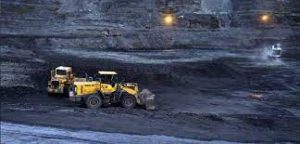
An internet-based platform called ‘VIHANGAM’ integrated with a Remotely Piloted Aircraft System (RPAS) at Mahanadi Coalfields Limited (MCL) was inaugurated.
Mahanadi Coalfields Limited:
- It is one of the major coal producing companies of India. It is one of the eight subsidiaries of Coal India Limited.
- MCL was the first coal company to introduce environment-friendly Surface Mining technology in 1999.
- The biggest fleet of 66 Surface Miners is contributing 95%of the total coal production of the company.
- The system consists of a Ground Control Station (GCS), an RPAS, internet lease line of 40 Mbps and VIHANGAM portal.
- The system enables real-time transmission of aerial video of mining activities from mines to internet platforms which can be accessed through VIHANGAM portal by authorized personnel only having ID and password.
Remotely Piloted Aircraft System (RPAS):
- RPAS is one subset of the Unmanned Aircraft System (UAS).
- There are three subsets of Unmanned Aircraft- Remotely Piloted Aircraft, Autonomous Aircraft and Model Aircraft.
- Drone is a layman terminology for Unmanned Aircraft (UA).
- Remotely piloted aircraft have been divided into five categories based on their weight (existing rules).
- Nano : Less than or equal to 250 grams.
- Micro : From 250 grams to 2kg.
- Small : From 2 kg to 25kg.
- Medium : From 25kg to 150kg.
- Large : Greater than 150kg
- Remotely Piloted Aircraft consists of remote pilot station(s), the required command and control links and any other components, as specified in the type design.
RuPay Debit Card And BHIM UPI:

The Union Cabinet announced that it has approved a scheme to provide incentives of small amounts for transactions done through the RuPay Debit Card and BHIM UPI. This will incur an expense of around ₹1,300 crores.
- The Government will reimburse transaction charges levied on digital payments made by persons to the merchant as part of the merchant discount rate (MDR)
- MDR (Merchant Discount Rate) is basically a fee that a merchant is charged by their issuing bank for accepting payments from their customers via credit and debit cards
- In Budget 2020-21, the government prescribed zero Merchant Discount Rate (MDR), the rate merchants pay to scheme providers, for RuPay and UPI, both NPCI products, to popularise digital payments benefiting both customers and merchants.
- Digital payments have found strong ground, especially in India, increasingly relegating all other modes of payments to the background.
- It is through a faster system of simultaneous debits and credits that the money value is transferred from one account to the other across banks.
- It embraces all kinds of operators (including direct benefit transfer by the government) across the country and even internationally, subject to regulatory forbearance.
- According to a report, Indian digital payment industry is expected to reach $1 trillion by 2023.
Cryptocurrency:
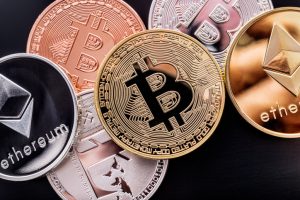
International Monetary Fund (IMF) Chief Economist has made a strong case for regulating cryptocurrencies, saying it will always be a challenge to ban them as they operate from offshore exchanges; and feels it to be more attractive to adopt cryptocurrencies and assets in emerging economies than in advanced economies
- A cryptocurrency is a digital asset designed to work as a medium of exchange wherein individual coin ownership records are stored in a ledger existing in a form of a computerized database.
- It uses strong cryptography to secure transaction records, to control the creation of additional coins, and to verify the transfer of coin ownership. It typically does not exist in physical form (like paper money) and is typically not issued by a central authority.
- Cryptocurrencies typically use decentralized control as opposed to centralized digital currency and central banking systems
Significance of Cryptocurrencies
- As blocks run on a peer-to-peer network, it helps keep corruption in check by tracking the flow of funds and transactions.
- Cryptocurrencies can help save money and substantial time for the remitter and the receiver, as it is conducted entirely on the Internet, runs on a mechanism that involves very less transaction fees and is almost instantaneous.
- Intermediaries such as banks, credit card and payment gateways draw almost 3% from the total global economic output of over $100 trillion, as fees for their services.
- Integrating blockchain into these sectors could result in hundreds of billions of dollars in savings.
Cryptocurrencies pose risks to consumers.
- They do not have any sovereign guarantee and hence are not legal tender.
- Their speculative nature also makes them highly volatile. For instance, the value of Bitcoin fell from USD 20,000 in December 2017 to USD 3,800 in November 2018.
- A user loses access to their cryptocurrency if they lose their private key (unlike traditional digital banking accounts, this password cannot be reset).
- In some cases, these private keys are stored by technical service providers (cryptocurrency exchanges or wallets), which are prone to malware or hacking.
- Cryptocurrencies are more vulnerable to criminal activity and money laundering. They provide greater anonymity than other payment methods since the public keys engaging in a transaction cannot be directly linked to an individual.
- A central bank cannot regulate the supply of cryptocurrencies in the economy.
- This could pose a risk to the financial stability of the country if their use becomes widespread.
- Since validating transactions is energy-intensive, it may have adverse consequences for the country’s energy security (the total electricity use of bitcoin mining, in 2018, was equivalent to that of mid-sized economies such as Switzerland).
The State Of The World’s Land And Water Resources For Food And Agriculture:
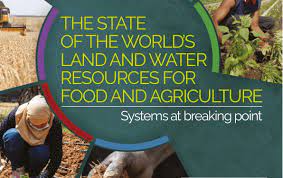
As per the recently released, ‘The State of the world’s land and water resources for food and agriculture (released by FAO)’, water and land resources are being pushed to limits due to human actions.
Highlights of the report:
- Sources of fodder (grassland and shrub-covered areas) have declined by 191 million hectares in the past two decades due to the conversion of this to the cropland
- Due to population increase, agricultural land available per capita for crops and animal husbandry declined by 20 per cent between 2000 and 2017 to 0.19 ha /capita in 2017.
- It was reported that almost a third of rain-fed cropland and nearly a half of irrigated land are subject to human-induced land degradation which primarily affected the fertility of the soil
- Over 60 per cent of irrigated areas are degraded in northern Africa, south Asia and the middle east-western Asia.
- The rapid growth of cities had a significant impact on land and water resources; in 2018, 55 per cent of the world’s population were urban dwellers. This meant encroachment on good agricultural land.
- Most pressures on the world’s land, soil and water resources are from agriculture due to use of chemical fertilizers, farm mechanization etc.
- The degradation of the resources might continue unabated to meet the food security needs of the ever-growing population since by 2050 agriculture will need to produce almost 50 per cent more food, livestock fodder and biofuel than in 2012 to satisfy global demand and keep on track to achieve “zero hunger” by 2030.
- Local consumption and weather patterns need to be kept in mind while formulating the policies. Ex: Avoid growing sugarcane in those areas where water is deficient; encouraging organic farming
- A meaningful engagement with the key stakeholders – farmers, pastoralists, foresters and smallholders – directly involved in managing soils and conserving water in agricultural landscapes is crucial.
- Reforms in water and land-governance policies.
- Some of the steps taken in India to prevent degradation in regard include- soil health card, scientific irrigation methods (Pradhan Mantri Krishi Sinchai Yojana, Desert development program, Pradhan Mantri Krishi Sampada Yojana etc.)
Glasgow Climate Pact:
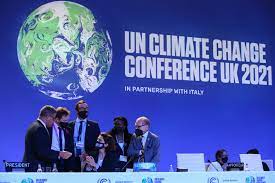
The commitment of recent Glasgow Climate Pact to strengthen our commitment to combat climate change by restricting global temperature rise to 1.5 degrees Celsius over pre-industrial levels
- India and CoP-26: At CoP26, India pledged to become a ‘net zero’ carbon emitter by 2070, and announced enhanced targets for renewable energy deployment and reduction in carbon emissions.
- Some major steps taken by India in recent times to meet climate change targets:
- The share of renewable energy in India’s energy mix has more than doubled from 11.8 per cent in March 2015 to 25.2 per cent in July 2021
- India has outlined several programs under its ambitious, ‘National Action Plan on Climate Change (NAPCC)’
- Setting up ‘International Solar Alliance’ to coordinate effort and institute measures to make use of the abundant renewable energy in the environment
- FAME Scheme for E-mobility: Union Government in April 2015 launched Faster Adoption and Manufacturing of Hybrid and Electric vehicles (FAME) – India Scheme with an aim to boost sales of eco-friendly vehicles in the country. It is a part of the National Mission for Electric Mobility.
- Atal Mission for Rejuvenation & Urban Transformation (AMRUT) for Smart Cities.
- Pradhan Mantri Ujjwala Yojana: The scheme provides LPG connections to five crore below-poverty-line beneficiaries. The connections are given in the name of women beneficiaries to reduce their dependence on fossil fuels and conventional fuel like cow dung for cooking food, thus reducing air pollution.
- UJALA scheme: The scheme was launched by the Prime Minister Narendra Modi in January 2015 with a target of replacing 77 crore incandescent lamps with LED bulbs. The usage of LED bulbs will not only result in reducing electricity bills but also help in environment protection.
- Swachh Bharat Mission: Swachh Bharat Abhiyan (Clean India Movement) is a campaign that was launched by Prime Minister Narendra Modi on October 2, 2014.
- The campaign seeks to clean the streets, roads and infrastructure of the country’s 4041 statutory cities and towns.




